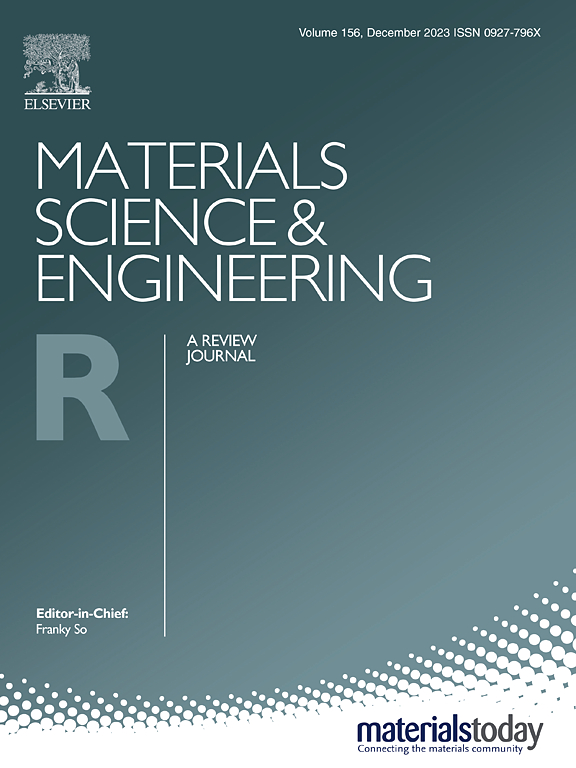Ways forward with conductive hydrogels: Classifications, properties, and applications in flexible electronic and energy gadgets
IF 31.6
1区 材料科学
Q1 MATERIALS SCIENCE, MULTIDISCIPLINARY
引用次数: 0
Abstract
In recent years, conductive hydrogels have garnered significant attention for use in flexible wearable electronics, owing to their exceptional flexibility, multifunctionality, and biocompatibility. This paper provides a comprehensive review of the advancements in multifunctional conductive hydrogels tailored for flexible wearable applications. The review begins with a discussion on the classification of conductive hydrogels, encompassing single-network and dual-network hydrogels based on conductive polymers or conductive additives. Following this, a detailed exploration of conductive hydrogels with multiple functionalities is presented, including toughness, adhesion, self-healing capabilities, swelling resistance, and shape memory, etc. The paper then delves into the application of these hydrogels in flexible devices, such as strain sensors, temperature sensors, triboelectric nanogenerators, energy storage devices, touch panels and bioelectronic devices. Current challenges facing the development and use of hydrogels are also summarized including multifunctional integration and commercialization. Furthermore, conductive hydrogels with targeted property should be designed and prepared according to the requirement of true applications scenarios and mass industrialization. Lastly, the paper offers an insightful and forward-looking perspective aimed at inspiring future innovations in this promising field.
导电性水凝胶的发展方向:分类、性质和在柔性电子和能源装置中的应用
近年来,导电水凝胶由于其卓越的灵活性、多功能性和生物相容性,在柔性可穿戴电子产品中得到了极大的关注。本文全面回顾了为柔性可穿戴应用量身定制的多功能导电水凝胶的进展。本文首先讨论了导电水凝胶的分类,包括基于导电聚合物或导电添加剂的单网水凝胶和双网水凝胶。随后,详细探讨了具有多种功能的导电水凝胶,包括韧性、粘附性、自愈能力、抗膨胀性和形状记忆等。然后,论文深入研究了这些水凝胶在柔性器件中的应用,如应变传感器、温度传感器、摩擦纳米发电机、能量存储器件、触摸面板和生物电子器件。总结了目前水凝胶开发和使用面临的挑战,包括多功能集成和商业化。根据真实应用场景和大规模工业化的要求,设计和制备具有针对性的导电水凝胶。最后,本文提出了一个富有洞察力和前瞻性的观点,旨在激发未来在这一充满希望的领域的创新。
本文章由计算机程序翻译,如有差异,请以英文原文为准。
求助全文
约1分钟内获得全文
求助全文
来源期刊

Materials Science and Engineering: R: Reports
工程技术-材料科学:综合
CiteScore
60.50
自引率
0.30%
发文量
19
审稿时长
34 days
期刊介绍:
Materials Science & Engineering R: Reports is a journal that covers a wide range of topics in the field of materials science and engineering. It publishes both experimental and theoretical research papers, providing background information and critical assessments on various topics. The journal aims to publish high-quality and novel research papers and reviews.
The subject areas covered by the journal include Materials Science (General), Electronic Materials, Optical Materials, and Magnetic Materials. In addition to regular issues, the journal also publishes special issues on key themes in the field of materials science, including Energy Materials, Materials for Health, Materials Discovery, Innovation for High Value Manufacturing, and Sustainable Materials development.
 求助内容:
求助内容: 应助结果提醒方式:
应助结果提醒方式:


